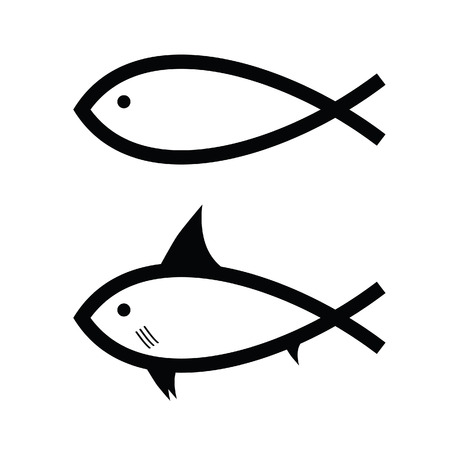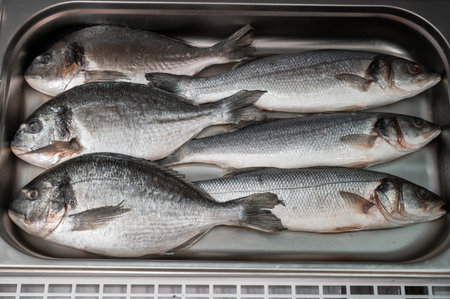1. Introduction: The Role of Feeders in UK Coarse Fishing
When it comes to coarse fishing across Britain’s rivers, lakes, and canals, feeder selection plays a pivotal role in shaping the angler’s success. The uniquely British landscape—think reed-fringed stillwaters, meandering lowland rivers, and ancient estate lakes—offers both challenges and opportunities for those seeking bream, tench, carp, or roach. Over generations, British anglers have refined their approach to match these distinct environments, and nowhere is this more evident than in the choice between method feeders and cage feeders. Whether you’re setting up along a misty fen drain or casting beneath overhanging willows, understanding the nuances of your feeder can make all the difference. With the right knowledge, you’ll not only increase your catch rate but also connect with a rich tradition that values observation, adaptability, and a touch of quiet British ingenuity.
2. Understanding Method Feeders
Method feeders have rapidly become a staple in the tackle boxes of UK coarse anglers, particularly those targeting carp and bream on commercial fisheries and stillwaters. The method feeder is designed to deliver a compact parcel of groundbait or pellets directly around your hookbait, creating a high-attraction hotspot that draws fish in with remarkable efficiency.
Setup and Rigging
Setting up a method feeder is refreshingly simple yet highly effective. The rig typically involves a short hooklength—often no more than 10cm—attached to the feeder itself. The feeder is loaded with dampened groundbait or micro-pellets, which are moulded around the frame, encapsulating the hookbait (such as a boilie, pellet, or corn) within or just outside the bait ball. This setup ensures minimal tangling and positions your hookbait right where the fish are feeding.
Baiting Techniques
One of the defining strengths of the method feeder lies in its versatility with bait. Groundbait can be mixed to varying consistencies depending on water temperature and target species, while micro-pellets soaked in attractants work wonders for wary carp. Many UK anglers favour sweetcorn or mini boilies as the hookbait, offering just enough visibility and scent to tempt cautious fish. Quick-release method moulds are often used to ensure each cast delivers a perfectly shaped payload every time.
When Does the Method Feeder Shine?
The method feeder excels in situations where fish are feeding close to the lakebed—a common scenario on busy UK commercials where pressured carp patrol margins and open water alike. Its pinpoint accuracy allows for repeated casting to the same spot, building up a bed of feed and encouraging competitive feeding. Below is a table highlighting when the method feeder typically outperforms alternative approaches:
| Fishing Scenario | Why Method Feeder Excels |
|---|---|
| Packed Commercial Fisheries | Creates concentrated feeding zones; ideal for pressured fish |
| Targeting Carp & Bream | Delivers both attraction (groundbait) and sustenance (hookbait) together |
| Short Session Angling | Quick to set up and effective at attracting bites fast |
| Windy Conditions | Aerodynamic design maintains casting accuracy and prevents feed dispersal mid-flight |
With its blend of simplicity, precision, and adaptability, it’s little wonder that method feeders have earned their reputation as a go-to tactic for UK coarse fishing enthusiasts looking to tip the odds in their favour.

3. The Classic Cage Feeder Approach
When discussing feeder fishing in the UK, the cage feeder holds a special place in the hearts of traditional coarse anglers. Its design—a simple open-ended metal or plastic cage—has stood the test of time and remains a staple on both rivers and stillwaters across Britain. The beauty of the cage feeder lies in its versatility; whether you’re targeting dace and chub on a flowing river or roach and bream on a tranquil lake, this classic approach adapts seamlessly to various conditions.
The primary benefit of cage feeders is their ability to deliver groundbait efficiently, releasing it steadily as water flows through the cage. This creates an enticing cloud that draws fish into your swim without overwhelming them with feed. For anglers who prize precision and control, especially when using maggots, hemp, or sweetcorn, the cage feeder offers unrivalled finesse. You can adjust your mix for quick breakdowns in winter or opt for stickier blends to withstand faster currents in summer months.
Cage feeders also have a strong standing within traditional British coarse fishing culture. Many seasoned anglers recall fond memories of match days along the River Trent or Grand Union Canal, where a well-placed cage feeder was often the difference between a blank day and a bulging keepnet. In an era where modern tactics abound, there’s something reassuring about reaching for a classic cage setup—familiar, effective, and steeped in angling heritage.
4. Key Differences: Method vs. Cage Feeders
Presentation and Bait Release
The core difference between method and cage feeders lies in their approach to bait presentation and release, a critical factor for UK coarse anglers targeting wary fish in pressured waters. Method feeders mould groundbait or pellets directly onto the feeder, creating a compact, streamlined parcel that lands with minimal disturbance. Upon reaching the lakebed, the bait breaks down steadily, forming an enticing carpet around your hookbait—perfect for drawing carp and bream in stillwaters. In contrast, cage feeders are designed to release loose groundbait rapidly through their open mesh construction, dispersing a cloud of attractants downstream in flowing rivers or on windswept reservoirs. This makes them ideal for targeting chub, roach, and dace where scent trails can pull fish from distance.
Rig Mechanics
How each feeder integrates with your rig also shapes your fishing approach. Method feeders typically utilise short hooklengths (often under 10cm), keeping the hookbait close to the feed for instant pick-ups—this is especially effective when targeting larger, opportunistic species like carp. Cage feeders favour longer hooklengths (15–45cm), allowing more natural movement of the bait in flow and reducing suspicion among finicky silverfish.
Fish Response in Different Environments
| Feeder Type | Stillwater Response | River/Flowing Water Response |
|---|---|---|
| Method Feeder | Excellent for carp and tench; creates tight feeding zone; best where fish are browsing slowly over beds of bait. | Less effective; slow breakdown means bait may be swept away before attracting fish. |
| Cage Feeder | Effective for roach, bream, and hybrids; ideal for spreading attraction over a wider area. | Superb for chub, dace, barbel; rapid bait dispersal creates strong scent trail downstream. |
Summary Table: Method vs. Cage Feeders at a Glance
| Method Feeder | Cage Feeder | |
|---|---|---|
| Bait Release Speed | Slow & Controlled | Fast & Dynamic |
| Best Hooklengths | Short (under 10cm) | Longer (15–45cm) |
| Main Target Species | Carp, Tench, Bream (big fish) | Roach, Chub, Dace (mixed species) |
| Preferred Waters | Lakes, Stillwaters, Commercials | Rivers, Drains, Large Reservoirs |
| Bait Types Used | Packed Groundbait/Pellets | Dampened Groundbait/Casters/Maggots/Worms |
In essence, choosing between method and cage feeders hinges on understanding how these subtle differences impact your fishing—whether you’re coaxing specimen carp from a misty estate lake at dawn or trotting maggots downstream for winter grayling on the Trent. Each feeder type brings its own advantages to the varied tapestry of British coarse angling.
5. Choosing the Right Feeder for UK Conditions
Selecting between method and cage feeders in the UK is never a one-size-fits-all affair—it’s about blending gear with seasonal changes, species behaviour, and the ever-unpredictable British weather. Here’s how to refine your feeder choice for distinctly British coarse fishing sessions.
Seasonal Considerations
In spring and summer, when fish are actively feeding and water temperatures climb, method feeders shine. The compact balls of groundbait stay intact on the cast and break down swiftly on warmer lakebeds, drawing in hungry carp or bream with a concentrated aroma cloud. Come autumn or those milder winter spells, cage feeders come into their own. Their open design helps disperse smaller particles gradually—a subtle invitation ideal for roach or skittish silver fish when bites are harder to tempt.
Target Species Preferences
If you’re targeting carp—especially on commercial venues—method feeders loaded with sticky micros or sweetcorn are hard to beat. Carp can’t resist grubbing around a tight patch of bait. For bream, especially on larger natural waters or rivers, cage feeders filled with crumb and chopped worm spread attractants over a wider area, encouraging shoals to settle. For roach and other silver fish, opt for small cage feeders that let fine groundbait waft gently through the current—just enough to keep them interested without overfeeding.
Weather Matters
The great British weather can be fickle: on blustery days, method feeders provide aerodynamic stability, helping you punch casts straight into the wind and ensuring your bait remains close to your hook. In contrast, during periods of rain or when rivers are carrying extra colour, cage feeders allow you to feed more frequently and adjust the amount of loose offerings—perfect for keeping bites coming when visibility is reduced.
Ultimately, adapting your feeder style to suit conditions is a sign of seasoned angling nous. Pack both options in your kit bag—because as every UK coarse angler knows, flexibility is as important as finesse beside our changeable waters.
6. Final Thoughts: Blending Tradition with Modern Approach
As the banks of British lakes and rivers bear witness to ever-changing tackle boxes, today’s coarse angler stands at a fascinating crossroads between heritage and innovation. The friendly rivalry between method feeders and cage feeders encapsulates more than just technical choice—it represents the broader evolution of UK coarse fishing itself. While many cherish the nostalgia of a classic cage feeder gently releasing a cloud of groundbait, there’s no denying the efficiency and adaptability that method feeders bring, especially when targeting larger carp or pressured venues.
Blending these approaches is far from betraying tradition; rather, it’s about celebrating it while embracing progress. Savvy anglers respect the proven tactics that have filled keepnets for generations—timing, watercraft, and bait presentation—yet they are unafraid to experiment with modern rigs, quick-change systems, and advanced bait blends. The key lies in appreciating what each feeder offers: perhaps starting a session with a cage feeder for its subtlety on cold mornings, then switching to a method feeder as fish become more active and responsive.
This respectful fusion encourages us to remain observant, adaptive, and considerate of both fish welfare and fellow anglers. Whether you’re casting under willows at dawn or settling beside a misty canal at dusk, your choice of feeder becomes an extension of your own angling philosophy—a balance of time-honoured patience and contemporary curiosity. By blending tradition with innovation, British coarse fishing remains both rooted in its rich past and alive with new possibilities for seasons to come.


